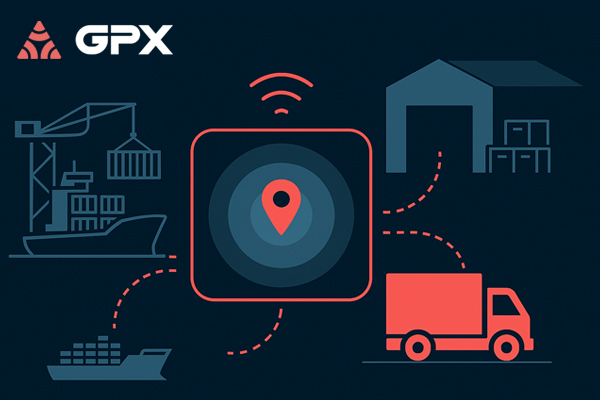I’ve implemented tracking at scale and learned this the hard way: visibility without context is noise. A beautiful map won’t reduce theft, schedule maintenance, or reconcile inventory drift by itself. The leaders who win use AI to turn signals into action—triaging what matters, recovering faster, scheduling smarter, and catching anomalies before they become losses. I’ve watched teams go from reactive to proactive in a single quarter once they had predictions, not just positions. That’s the shift—from seeing assets to understanding and influencing their behavior. Here’s how AI asset intelligence works, and why it’s the next step beyond tracking.
AI Asset Tracking: Moving Beyond Dots on a Map to True Asset Intelligence

Table of contents
Contributors

Mitch Belsley
For any enterprise in sectors like manufacturing, construction, automotive, or healthcare, managing physical assets is a critical, high-stakes operation. The core challenge has always been the same: knowing where your crucial equipment, inventory, and vehicles are. While traditional GPS provided a starting point, today’s leaders need more than just dots on a map.
The Hidden $50 Billion Problem: Global cargo theft costs businesses up to $50 billion annually according to the NICB. In construction alone, equipment theft results in $300 million to $1 billion in annual losses according to the National Equipment Register. Healthcare facilities lose 10-20% of their mobile medical equipment annually, costing billions. If you’re managing physical assets worth over $100,000, you’re statistically likely to lose 5-15% of that value annually to theft, misplacement, or inefficiency.
This is where AI Asset Tracking comes in.
This modern approach uses artificial intelligence to solve complex logistical problems, from optimizing warehouse operations to powering equipment tracking on a remote job site. But even this is just the beginning. This article explores how leading organizations are moving beyond simple tracking to embrace AI Asset Intelligence—a strategic shift that turns data noise into dollars and operational clarity.
What is AI Asset Tracking? From Location Data to Actionable Intelligence
At its core, AI Asset Tracking enhances traditional GPS and RFID tracking through machine learning algorithms. It transforms raw location data into actionable intelligence.
This isn’t just about knowing where assets are; it is about understanding patterns, predicting problems, and automating responses.
A recent 2025 market forecast from IDC reveals that over 75% of Global 2000 companies will leverage AI-powered asset intelligence to enhance supply chain resilience, making it a standard operational practice rather than a competitive advantage.
Modern smart asset management systems leverage multiple technologies, including IoT sensors, predictive analytics, and automated geofencing to achieve these results.
Core Capabilities of AI Asset Intelligence
AI Asset Intelligence represents a fundamental shift. While tracking answers “where,” intelligence answers “why,” “what if,” and “what’s next.” This evolution manifests in several critical capabilities.
Slash Downtime with AI-Powered Predictive Maintenance
ML algorithms analyze sensor data to predict equipment failures before they occur. This transforms maintenance from reactive firefighting to strategic planning.
Deloitte research shows predictive maintenance reduces breakdowns by 70% and maintenance costs by 25%.
Vibration sensors can detect bearing wear, and temperature anomalies can signal overheating risks, allowing AI to generate prescriptive analytics that guide maintenance decisions.
Stop Theft in its Tracks with Intelligent Anomaly Detection
AI systems learn normal movement patterns and flag deviations instantly. When construction equipment moves outside scheduled hours or enters high-risk zones, the system triggers immediate alerts.
This capability alone has helped companies achieve up to a 50% reduction in theft incidents. The sophistication goes beyond simple geofencing, with AI models analyzing historical theft patterns and local crime data to calculate real-time risk scores.
Achieve End-to-End Supply Chain Visibility
For complex supply chains, AI provides unprecedented visibility. Real-time alerts notify stakeholders of delays or route deviations that could impact delivery schedules.
In pharmaceutical tracking and cold chain logistics, this means maintaining an unbroken chain of custody while ensuring temperature compliance, preventing millions in spoilage losses.
How AI Agents Provide Instant Answers
The latest advancement is the emergence of specialized AI agents that act as embedded data analysts. To make this tangible, let’s look at how an agent like our own Scout AI transforms how teams interact with asset data.
How an AI Agent Drives Unprecedented ROI
Consider the impact: A dwell time analysis across multiple distribution centers that previously required three days of spreadsheet work can now be completed in under three minutes with Scout AI.
Key capabilities driving this ROI include:
- 95% reduction in analysis time for complex queries
- 80% improvement in anomaly detection accuracy compared to rule-based systems
- Elimination of external consulting costs for data analysis projects
Ask Questions in Plain English, Get Answers in Seconds
The paradigm shift comes from accessibility. Any team member can ask in plain English: “Which trailers have been idle for more than 48 hours in high-theft zones?”
This democratization means operational insights aren’t bottlenecked through IT. Warehouse managers and field supervisors get immediate answers, enabling faster, more informed decisions.
Quantifying the Financial Impact: The Real ROI of AI Tracking
The business case for AI asset intelligence rests on measurable financial returns. Understanding these components helps build a compelling justification for investment.
Direct Cost Reduction: Theft, Loss, and Insurance
With cargo theft increasing 15% year-over-year according to CargoNet, preventing even a single incident can justify the entire investment. Organizations typically see:
- 50% reduction in theft incidents
- 80% improvement in stolen asset recovery rates
- 15-30% reduction in insurance premiums
Operational Efficiency: Slashing Downtime and Waste
Best-in-class companies using intelligent asset monitoring achieve a 23% reduction in operational costs and a 45% decrease in unplanned downtime through predictive maintenance and optimized deployment.
Hidden Cost Avoidance: Ghost Assets and Project Delays
Studies show 5-30% of company assets are “ghosts”—lost or stolen but still on the books. Eliminating these can recover significant working capital. Furthermore, preventing equipment unavailability avoids project delays that can cost $5,000-$50,000 per day.
Calculating Your Specific ROI: A Tangible Example
For an enterprise construction firm with a 500-asset fleet valued at $75 million, the decision to invest depends on achieving a clear and substantial return. The annual investment for an enterprise-grade AI tracking solution across this fleet is $75,000, calculated at a rate of $150 per asset, forming the foundation of our financial model.
The platform delivers a projected $450,000 in total annual savings. This strong return is achieved by preventing two high-value equipment thefts (saving $200,000), generating $175,000 in operational efficiencies through fuel and maintenance optimization, and recovering $75,000 in previously lost ghost assets, a one-time recovery that alone offsets the full annual investment.
This model results in a 500% first-year ROI and a rapid payback period of only two months. The investment quickly shifts from being a cost to becoming a significant profit driver, demonstrating its strategic value for large-scale operations.
| Metric | Value |
|---|---|
| Annual Investment | $75,000 |
| Annual Savings | |
| Theft Prevention (2 incidents) | $200,000 |
| Efficiency Gains (combined) | $175,000 |
| Ghost Asset Recovery | $75,000 |
| Total Annual Savings | $450,000 |
| Payback Period | ~2 Months |
| First-Year ROI | 500% |
Ready to build your own business case? Download our comprehensive whitepaper for detailed implementation frameworks and industry-specific ROI calculators.
AI Asset Tracking in Action: Use Cases for Construction, Healthcare, and Logistics
Different industries leverage AI asset intelligence to solve unique challenges with transformational results.
Construction: Fighting Theft and Boosting Utilization
The construction industry loses up to $1 billion annually to equipment theft. AI-powered solutions deliver real-time alerts for after-hours movement and predictive maintenance that reduces breakdowns by 75%.
Healthcare: Optimizing Medical Equipment Management
Hospitals often cannot locate 10-20% of their mobile medical equipment when needed. AI-driven RTLS reduces patient care delays by 30% and decreases unnecessary equipment purchases by 25%.
Manufacturing & Logistics: Achieving 99.9% Inventory Accuracy
In logistics, AI enables 99.9% inventory accuracy, a 40% reduction in safety stock requirements, and a 25% improvement in order fulfillment speed. 3PL providers report a 50% reduction in misplaced trailers.
Addressing and Overcoming Common Objections
Understanding stakeholder concerns is crucial for successful adoption.
“We’ve never had a significant theft problem.”
The FBI reports cargo theft is vastly underreported. More importantly, theft prevention is just one benefit. Operational efficiency gains alone typically deliver a 200-300% ROI.
“Our team lacks the technical expertise for AI.”
Modern AI agents, like Scout AI, eliminate this barrier with natural language interfaces. Users ask questions in plain English and receive insights without needing data science skills.
“The projected ROI seems too good to be true.”
These returns are documented across industries. Start with a pilot program on 10-20 assets to prove value with your specific operations. Most organizations see measurable results within 30 days.
Frequently Asked Questions (FAQs)
What is AI Asset Tracking?
AI Asset Tracking uses technologies like GPS and IoT sensors, enhanced with artificial intelligence and machine learning. Instead of just showing an asset’s location, it analyzes data to identify patterns, predict future events like maintenance needs, and automate alerts for issues like potential theft.
How does predictive analysis work in AI asset tracking?
Predictive analysis uses historical data from an asset’s sensors (e.g., location, usage hours, temperature, vibration) to forecast future outcomes. AI models identify subtle patterns in this data that precede events like equipment failure or theft. This allows the system to proactively alert you to a potential breakdown before it happens or to flag an asset that is at a high risk of being stolen, shifting from a reactive to a proactive operational model.
What is AI asset intelligence, and how is it different from standard GPS tracking?
Standard GPS provides location coordinates. AI Asset Intelligence analyzes patterns, predicts issues, flags anomalies, and automates responses. It transforms raw data into strategic insights.
How does AI actually help recover stolen assets?
AI systems learn normal behavior and instantly detect anomalies like after-hours movement. This enables immediate alerts to security and law enforcement with live tracking data, improving recovery rates by up to 80%.
What are the main ways AI tracking reduces operational costs?
Cost reduction occurs by preventing theft, optimizing asset utilization (reducing unnecessary purchases/rentals), automating analysis, predictive maintenance (preventing breakdowns), and improving labor productivity.
Is this technology difficult to integrate with existing systems?
Modern platforms prioritize integration through robust APIs for major ERP/EAM systems. An AI agent interface reduces complexity, and most organizations achieve full deployment within 4-8 weeks.
How secure is the data collected by AI asset tracking systems?
Enterprise-grade platforms employ bank-level security, including end-to-end encryption, SOC 2 compliance, and secure cloud infrastructure to protect your sensitive operational data.
